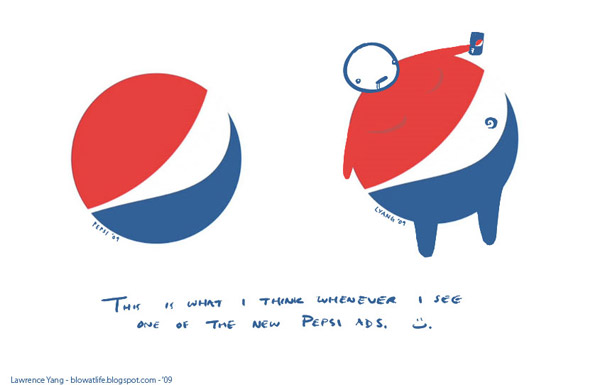


Today, the logo is the central point of any company’s branding policy. A logo makes the business appear credible and professional. Marketing has become so crucial and logos being the focal point of marketing campaigns, all the companies strive for generating the most eye-catching logo to garner their customer’s attention. The logo has become the trump card in the hands of the businessmen to build up the distinct brand.
It is very interesting to see the evolution of brands over the years. It is a natural process for companies to feel the need to keep their logo/s up to date, just as fashion trends change over time. The most important thing for a brand is gaining the customers trust, and once this is done their logo becomes remembered and purchased time and time again.
Levi Strauss jeans has been around since 1853 and is still going strong today. I would like  to point out it is one of the very few companies whose logo hasn’t actually evolved, but has stayed much the same since its beginning, and they have been very successful in doing so. It has been a great strategy for the brand as their loyal customers haven’t needed to worry about remembering any updated logo and have solely been left to focus on the product itself. The fact that this logo has remained the same since the beginning is quite remarkable and shoes that Levi’s is definitely one quality product and has gained the trust of its customers. You know you are getting a quality pair of jeans when you but Levi’s.
to point out it is one of the very few companies whose logo hasn’t actually evolved, but has stayed much the same since its beginning, and they have been very successful in doing so. It has been a great strategy for the brand as their loyal customers haven’t needed to worry about remembering any updated logo and have solely been left to focus on the product itself. The fact that this logo has remained the same since the beginning is quite remarkable and shoes that Levi’s is definitely one quality product and has gained the trust of its customers. You know you are getting a quality pair of jeans when you but Levi’s.

The 501 jean style is one of their trademark designs and is still loved and worn today. Levi’s are very successful with their advertising and really make you want not only a pair of Levi’s jeans these days but other various clothing and products they now sell.

http://www.instantshift.com/2009/01/29/20-corporate-brand-logo-evolution/
http://www.funkyspacemonkey.com/brands-evolution
http://en.wikipedia.org/wiki/Brand
http://en.wikipedia.org/wiki/Levi_Strauss_%26_Co.
http://www.levistrauss.com/brands/levis

















 Apple II was successful mainly because it had colored graphics. Great and simple design, has always been the USP (Unique Selling Proposition) for Apple, and their logo is no exception. When Apple was started, the logo was a complicated picture of Isaac Newton sitting under a tree. This had been designed by Jobs and Wayne, with the inscription: “Newton … A Mind Forever Voyaging Through Strange Seas of Thought … Alone.” Frankly, I don’t think it was just a coincidence that Apple had slow sales during this period.
Apple II was successful mainly because it had colored graphics. Great and simple design, has always been the USP (Unique Selling Proposition) for Apple, and their logo is no exception. When Apple was started, the logo was a complicated picture of Isaac Newton sitting under a tree. This had been designed by Jobs and Wayne, with the inscription: “Newton … A Mind Forever Voyaging Through Strange Seas of Thought … Alone.” Frankly, I don’t think it was just a coincidence that Apple had slow sales during this period.
 A
A





 This type of loyalty can be a great asset to the firm: cust
This type of loyalty can be a great asset to the firm: cust






 the 1990s, but its Chuck Taylor trainers
the 1990s, but its Chuck Taylor trainers  More than 750 million pairs of the company's best-selling and best-known brand, Chuck Taylor All Star trainers, have been sold. The shoe was originally introduced in 1917 as the Converse All Star. Basketball player Chuck Taylor j
More than 750 million pairs of the company's best-selling and best-known brand, Chuck Taylor All Star trainers, have been sold. The shoe was originally introduced in 1917 as the Converse All Star. Basketball player Chuck Taylor j



 advancement in technology. It has become even easier to become victims of 'stalking' and
advancement in technology. It has become even easier to become victims of 'stalking' and
 level of 'street smarts' and supplying information to the child and parent on ways to protect themselves e.g. not adding or contacting anyone they don't know.
level of 'street smarts' and supplying information to the child and parent on ways to protect themselves e.g. not adding or contacting anyone they don't know.